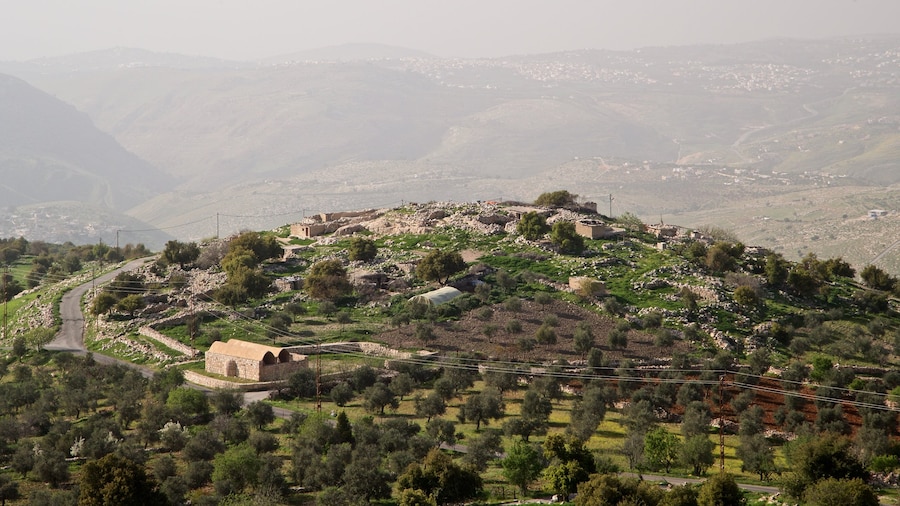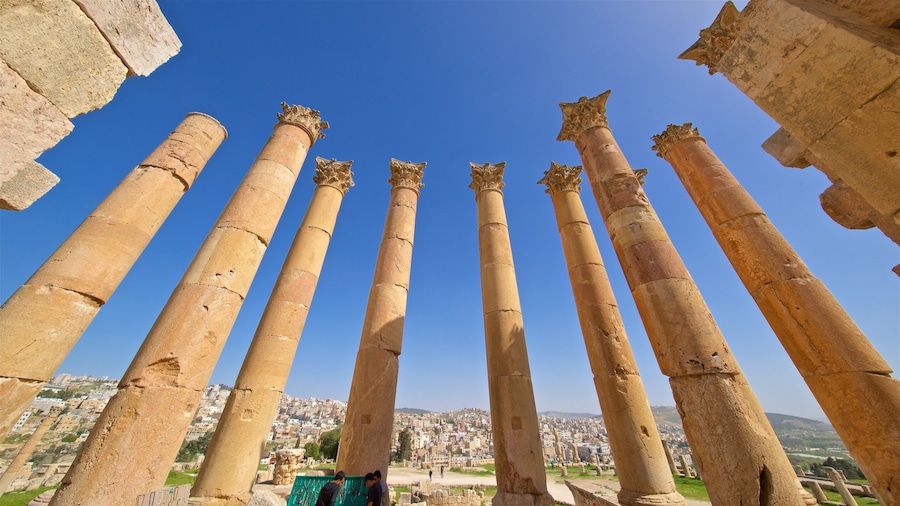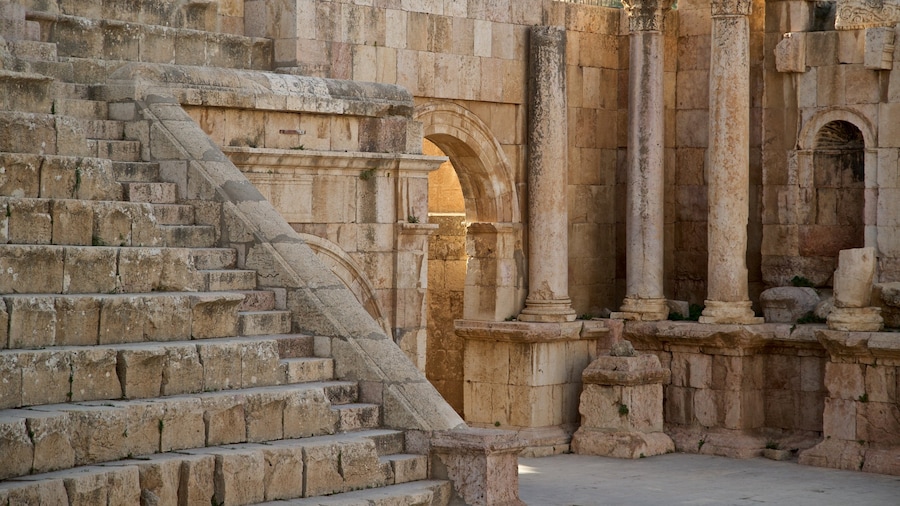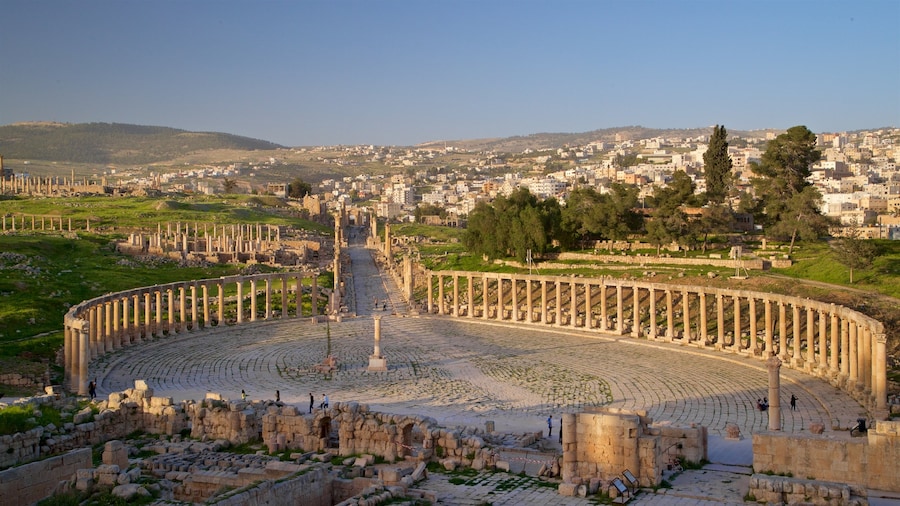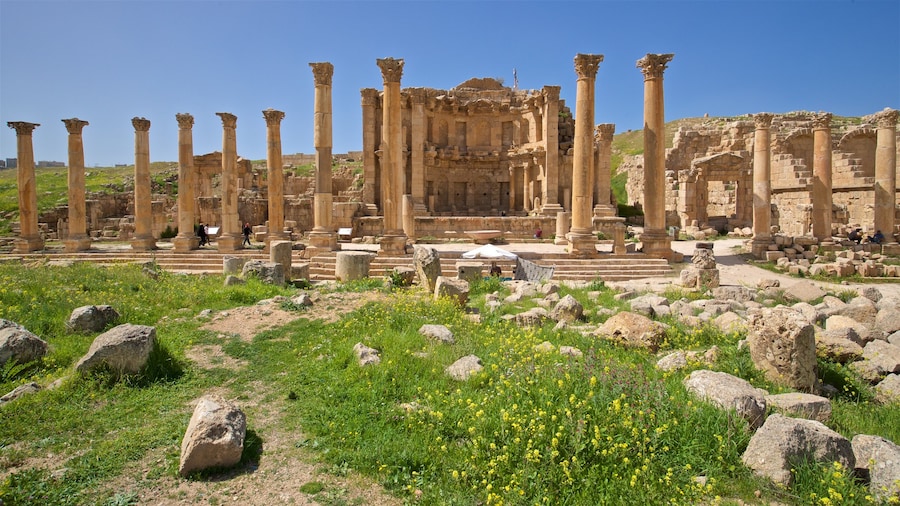Take in bird's-eye views of the Jordan Valley and learn about the lives of soldiers in ancient times at the picturesque Ajloun Castle. Over the centuries, this structure has served as a defensive outpost against the crusades, as an administrative centre and as storage for vital grains and food stocks. Reserve a full day to venture up the slopes of Mount ‘Auf and enjoy one of the area’s most significant landmarks.
Ajloun Castle was built in the 12th century. It is strategically positioned on a high point of the northern Jordan valley, with its purpose to defend against crusader attacks from the south and west. The castle has been damaged by Mongol hordes and two earthquakes since the 13th century and was rebuilt in its modern form during the Ottoman Empire.
As you approach the castle, admire its weathered towers and a deep dry moat that once protected it from attack. Just inside the main gate, read about the castle’s tumultuous past on a plaque written in English. Sign up for a tour with a local guide for further details, as other sources of information are limited. Guides can be found on-site and prices can be negotiated.
As you explore the castle, look out for its 11 water cisterns. Admire the view from small archer slits in the stone walls and learn about the life of royalty in the lord’s private quarters. From the balustrades, it’s easy to imagine how soldiers once looked out for pigeons that transmitted messages down the valley between Damascus and Cairo.
The castle’s outlooks provide spectacular views of its rugged mountain surrounds from the 4,000-foot (1,250-metre) peak of Mount ‘Auf. Look down the dramatic Jordan Valley and spot the three wadis (valleys) that lead into it, named Rajeb, Al-Yabes and Kufranjah.
Get to Ajloun castle on foot from the town below. This 1.8-mile (3-kilometre) trek takes about 1-hour each way. Alternatively, rent a taxi or take a minibus to the top of the mountain. Check the schedule, as bus services are infrequent.
Ajloun castle is open daily. There’s a fee for admission.





